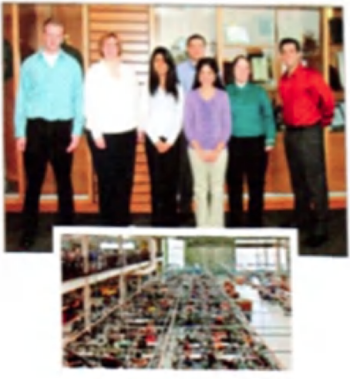Applied Engineering
Projects
We gratefully acknowledge Jim Manely and the Demmer Center for Business Transformation at Michigan State University for their guidance and assistance with our projects. We gratefully acknowledge Judy S. Jacobs, Director, Corporate & Student Relations Office, Michigan State University, Department of Supply Chain Management for her assistance in securing projects.
For information on becoming a project sponsor, please contact Dr. Laura Genik.
The Applied Engineering Sciences Capstone class is held in Spring Term only. The following were the project sponsors and projects for the Spring of 2012:
Establishing a Database of Artisans and Small Farmers and Recommendations for Leveraging the Current Farmers’ Market
 First surveyed in 1826 by Harvey Parke, Bath Township
First surveyed in 1826 by Harvey Parke, Bath Township
has grown from a railroad hub and part of DeWitt Township into its own distinct charter township serving a community of a little over 11,500 residents. Recently, Bath Township has been an integral part of the Southern Clinton County Farm and Food Coalition, whose focus is to “explore opportunities to support healthy food from farm to your plate.”
Bath Township officials and residents want their community to
remain rural and to decrease the potential for further suburban development. Therefore, Bath Township officials are exploring entrepreneurial business opportunities that will not change the “nature” of their community. However, before the township officials can decide which ventures to pursue they need to understand the capabilities and desires of their residents.
To do so, our group plans to reach out to the Bath community with various surveys for farmers, potential and current patrons, and artisans to fonn a database of their various local businesses. We will also complete a thorough market analysis, developing in-depth business strategies to improve the Bath community through an enhanced farmer’s market, distribution network, and/or community kitchen.
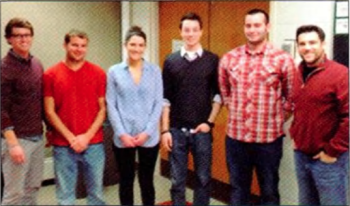
Team Members (L to R): Eric Thomas, Dan Allard, Nuala Christie, Carl Beamish, Karl Asher, and Patrick Kelleher
A Marketing Study for Applications of a Process to Improve Adhesion Using UV Light
researchers have expertise in processing, design and optimization, materials science, Nano-composite technology, structural analysis, surface science, and failure analysis, along with other studies. The CMSC is internationally recognized for its contributions to composite science and engineering.
Dr. Drzal, director of CMSC, is searching for new applications and markets for a patented process utilizing ultraviolet lights to treat the surface of specific materials to improve adhesion. Some large markets in which this technology could be greatly beneficial are the automotive, aerospace, and sporting goods industries. The UV treatment would replace the current processes that are dominated with other technologies such as flame, corona, plasma and chemical. The CMSC would like to explore these markets further and compete with the existing technologies by delivering a flexible, profitable, sustainable and cost-effective treatment.
This project entails two main objectives: conduct a market analysis of three industries that utilize a competing process, and create a sustainable business plan based around the UV technology that could replace one of the competing processes. Within each of these main objectives there are many other goals involved to complete the objectives. In the end our research and business proposal will be useful for the Composite Materials and Structures Center to help further their advancement in the market.
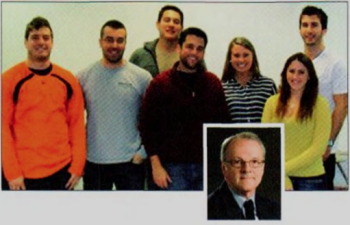
Team Members (L to R): Jackson Hartman, Josh Frontiera, Tori Mazur, Rachelle Emering, Ethan WIllis, Alex Jones and Dr. Larry Drzal (inset)
Recommendations for a Process to Recycle Glass on the MSU Campus
 Our group is taking on the challenge of developing a process
Our group is taking on the challenge of developing a process
to safely and cost-effectively introduce glass recycling to
the many campus buildings including academic and athletic
buildings and dorms. Our client is the MSU Surplus Store, which is responsible for the disposition of all university surplus properties and provides managed storage services to university departments. The items that they have for sale include office and residence hall furniture, lab equipment and supplies, vehicles, computers, farm equipment, books, and more. The Surplus Store offers storage services as well.
Our main objectives are to gain an understanding of the recycling system currently used at MSU. We will also leant the safety requirements included in the process of glass recycling on campus. We will develop a plan for glass recycling at MSU, in which we will develop an efficient and convenient building collection process. We will also identify collection container options used for glass recycling and develop a logistics plan to ship glass from various buildings to the recycling center in the safest way possible. We plan to develop off-loading procedures for the glass as well. Lastly, we will develop an advertisement plan to inform students about the new glass-recycling program.
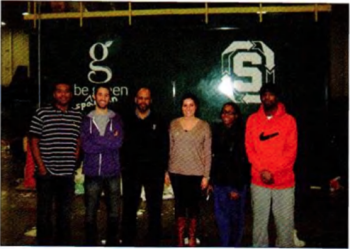
Team Members (L to R): Alonzo Howell, Matthew Epstien, Michael Mitchner, Kara Bolda, Darian Little, Nicholas Ratliff
Recommendations for Improved Marketing and Operations for Student Storage Services
 Sustainability has been a priority at Michigan State University for years. One of the major champions of the effort to “Go Green” on and around campus has been the MSU Surplus Store. In the past, the Surplus Store has managed storage of just about any material for university departments and staff. Over the past three years, the Surplus Store has also begun offering its services to students. Currently, students are able to rent a hamper (a large plastic tote) that the Surplus Store will pick up and deliver to the students’ dorms. Besides hampers, the Surplus Store also uses cardboard boxes for storage of materials. The vision statement of the Surplus Store shares how they hope to become the premier university or college “Surplus Store” through being resourceful, creative, and providing friendly, responsive customer feedback. In alignment with this vision, ideas for offering “green boxes” or plastic boxes for storage have been discussed and looked into. These green boxes would provide a much more sustainable option. Using current logistics and storage facilities, the store manager, Kris Jolley, hopes to improve operations and spread awareness of both the green boxes and the student storage service.
Sustainability has been a priority at Michigan State University for years. One of the major champions of the effort to “Go Green” on and around campus has been the MSU Surplus Store. In the past, the Surplus Store has managed storage of just about any material for university departments and staff. Over the past three years, the Surplus Store has also begun offering its services to students. Currently, students are able to rent a hamper (a large plastic tote) that the Surplus Store will pick up and deliver to the students’ dorms. Besides hampers, the Surplus Store also uses cardboard boxes for storage of materials. The vision statement of the Surplus Store shares how they hope to become the premier university or college “Surplus Store” through being resourceful, creative, and providing friendly, responsive customer feedback. In alignment with this vision, ideas for offering “green boxes” or plastic boxes for storage have been discussed and looked into. These green boxes would provide a much more sustainable option. Using current logistics and storage facilities, the store manager, Kris Jolley, hopes to improve operations and spread awareness of both the green boxes and the student storage service.
Our goal is to improve and enhance the operations and marketing for the student storage sendees. With a general framework for student storage in place, we will be focusing on several other important areas. We will be facilitating interdepartmental communication to improve logistics and customer satisfaction. The operations can be improved through cooperation between the Surplus Store, the residence halls, and the student population. By working as advocates for this program around campus, we will be able to improve the overall operations strategy, as well as generate an effective marketing strategy. This marketing strategy is another major focus of our work. Using both standard campus marketing outlets, as well as social media, we will attempt to popularize the student population with the storage program. Our marketing plan will also include research on local storage alternatives, to make both the pricing and the offerings comprehensive and competitive. The culmination of all these efforts will not only improve the value of the services offered by the MSU Surplus Store, but will improve the overall goal of improved sustainability on and around the MSU campus.
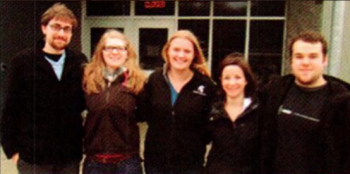
Team Members (L to R): Vincent Stefano, Aimee Smith, Christine Varley, Patricia Gordon, Daniel Hisscock
Recommendations for Conserving Drinking Water in Academic Units
 The MSU Office of Campus Sustainability is the driving force behind Michigan State University’s initiative to be Spartan green. A broad scope of ideas and initiatives has driven MSU to be one of the nation’s top five most sustainable campuses. Through 15 environmentally centered academic programs, local and worldwide partnerships, cutting edge research, and campus operations that holistically approach waste and greenhouse gas reduction, Spartans are working to create a better world. The goal of the Office of Campus Sustainability and impact of these actions is clean and affordable energy with a more sustainable future for all.
The MSU Office of Campus Sustainability is the driving force behind Michigan State University’s initiative to be Spartan green. A broad scope of ideas and initiatives has driven MSU to be one of the nation’s top five most sustainable campuses. Through 15 environmentally centered academic programs, local and worldwide partnerships, cutting edge research, and campus operations that holistically approach waste and greenhouse gas reduction, Spartans are working to create a better world. The goal of the Office of Campus Sustainability and impact of these actions is clean and affordable energy with a more sustainable future for all.
Business Challenge: The business challenge that the MSU Office of Sustainability faces involves personal water consumption campus-wide. Our end goal is to document, analyze, and improve the process of water delivery and consumption while at the same time reducing the level of waste generated. Specific areas of consideration include how reverse osmosis-treated water is used at Sparty’s Convenience stores, and how purchasing of five gallon jugs for water coolers is conducted on department and campus-wide levels. Conjectures will be based upon survey data gathered from various locations and departments across campus. Short and long-term recommendations will then be made, with high emphasis placed upon total sustainability.
Objectives:
• To document and generate data on how water is consumed by students at Sparty’s locations.
• To analyze purchasing methods and consumption rate of five gallon jugs for water coolers in various departments throughout campus.
• To make sound carbon footprint calculations on present methods and subsequent recommendations.
• To improve overall use of water on campus while generating less waste by using less energy.

Team Members (L to R): Ross Crumbaugh, Anthony lacovoni, Greg Beebe,
Dr. Susan Masten (Sponsor), Brent Haberl, Lance Kohs
Recommendations for Conserving Drinking Water in Residence Halls
 Currently the Office of Sustainability at Michigan State University is researching new methods to improve sustainability throughout the campus. The Be Spartan Green initiative leads research, data analysis and collection, programming, outreach, and communications to provide resources and new solutions in order to conserve energy, water, reduce waste, and maintain the campus ecosystem. The topic of conserving water and improving water quality is of great interest to the Office of Sustainability at Michigan State University, as the project will be investigating water consumption by students on campus and how to offer students quality filtered drinking water. The project of interest is guided by the Office of Sustainability’s efforts to reduce dependency on bottled water and water cooler water and offer quality drinking water that has a great taste to all Spartans. Our portion of the project will concentrate on water in the residence halls on campus.
Currently the Office of Sustainability at Michigan State University is researching new methods to improve sustainability throughout the campus. The Be Spartan Green initiative leads research, data analysis and collection, programming, outreach, and communications to provide resources and new solutions in order to conserve energy, water, reduce waste, and maintain the campus ecosystem. The topic of conserving water and improving water quality is of great interest to the Office of Sustainability at Michigan State University, as the project will be investigating water consumption by students on campus and how to offer students quality filtered drinking water. The project of interest is guided by the Office of Sustainability’s efforts to reduce dependency on bottled water and water cooler water and offer quality drinking water that has a great taste to all Spartans. Our portion of the project will concentrate on water in the residence halls on campus.
Statement of problem definition/deliverables
The current challenge of the project is to focus on why Owen Hall uses more water than all the other residence halls on campus on a per capita basis. The main focus area would be on the residence halls, and the project deliverables include administering a survey to residents with various questions, performing a blind taste test on the drinking water fountains in at least five residence halls to determine which tastes best (either filtered drinking water, bottled water, water from the tap in the building, or East Lansing water used by Brody). The group will be focusing on more operations issues relating to water consumption and usage, including: would it be cost effective to introduce new water filtering facilities at each residence hall, would it make sense to switch more residence halls to East Lansing water, and determining from where students on campus get their water. Other main objectives of the project include collaborating with the MSU Office of Sustainability’ to gain an understanding of MSU’s entire drinking water system and all drinking water options available to Spartans; gaining an understanding of the filtration process and the quality of the water offered, and recommending a cost-efficient way to provide quality drinking water for all Spartans on campus at all locations.
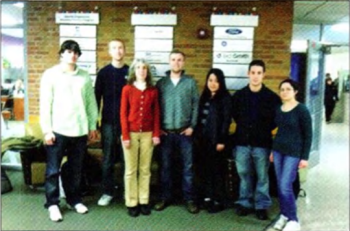
Team Members (L to R): Matt McAlpine, Chris Skierski, Dr. Susan Masten (Sponsor), Alex Voigt, Yifan Chen, Greg Edwards, Anu Sridaran
Recommendations for Measuring Sustainability Tools to Capture Client Needs
 Starting Now LLC is a startup consulting service designed to assist organizations, firms, and agencies
Starting Now LLC is a startup consulting service designed to assist organizations, firms, and agencies
toward achieving sustainability, one that will
benefit the organization, the community and the planet simultaneously. A key metric for the company when taking on new projects is to ensure its clients are committed to taking a 360-degree look at their organization instead of the traditional investor-only approach. Starting Now performs its consulting sendees by drawing on the extensive experiences of its founder and president, Terry Link. Mr. Link has had many jobs in the industry ranging from Executive Director of the Greater Lansing Food Bank to Director of the Michigan State University Office of Campus Sustainability.
One of Starting Now’s current challenges is helping their clients in both calculating and reducing their carbon footprint. Our team is tasked with achieving two things. One, develop an understating of how carbon footprints are measured, and identify relevant tools, particularly tools that are useful to the local restaurant industry. And two, create advertising material that espouses the importance of reducing the largest culprits of carbon footprint by sector.
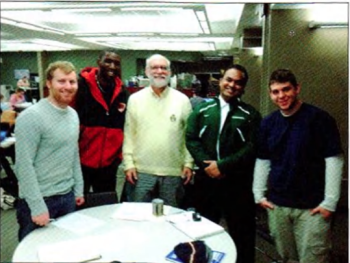
Team Members (L to R): Andy Malnor, Ralph Paulk, Terry Link (Sponsor), Avi Kotte, John Roberts, member Ryan Rivard is not pictured.
A Marketing Study for Applications of Graphene Paper
![]() XG Sciences is a privately held corporation that specializes in, manufactures and sells xGnP* brand graphene nanoplatelets and also develops advanced multifunctional materials based on their nanoplatelets. Graphene Paper had its beginning stages of development at Michigan State University in 2004, and the spinoff company was founded in 2006 from the Michigan State University Composite Center under the direction of Dr. Lawrence Drzal.Today this company is on the leading edge of technology with a material that is not only beginning to create noise in the engineering community but may soon become as popular and more successful than our everyday copper and plastics.
XG Sciences is a privately held corporation that specializes in, manufactures and sells xGnP* brand graphene nanoplatelets and also develops advanced multifunctional materials based on their nanoplatelets. Graphene Paper had its beginning stages of development at Michigan State University in 2004, and the spinoff company was founded in 2006 from the Michigan State University Composite Center under the direction of Dr. Lawrence Drzal.Today this company is on the leading edge of technology with a material that is not only beginning to create noise in the engineering community but may soon become as popular and more successful than our everyday copper and plastics.
The project summary and objectives include performing market research into applications for graphene paper and providing a recommendation to XG Sciences that will expose a profitable market for this material. Our goal is to provide XG Sciences with information that will link the consumers, customers, and the public to graphene paper and its properties and applications. With this information XG Sciences hopes to expand its tailoring of graphene for specific applications, advanced materials, and energy applications. To enhance XG Sciences’ graphene center, we will perform comprehensive and extensive market research in the field of aerospace corresponding to replacement of copper wiring and enhancing EMI shielding material. XG Sciences will be provided with research on competitors for graphene and in the aerospace industry, aerospace regulations, economic trends, supply and demand forecasts, market structure and many other factors. Our team will develop a business and action plan in order to implement our market research and strategy.

Team Members (L to R): Genevieve Abisaab, Richard Studstill, Andrew Gretel, Alex Burgoon, Robert Scipone, Patrick Kelleher, Trevor Harris, and Dr. Larry Drzal (Sponsor)
Development of a More Accurate Costing Analysis of Job Floor Process
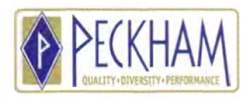 Peckham, Inc. is a nonprofit organization and one of the
Peckham, Inc. is a nonprofit organization and one of the
largest community vocational rehabilitation organizations
in Michigan. The company provides job training and competitive employment opportunities for persons with disabilities. Ever since Peckham’s founding in 1976, they have highly valued quality, diversity, and performance. Peckham continuously exceeds
the expectations of many with what they have to offer in apparel manufacturing, business services, environmental services, and supply chain solutions. To date, the company’s largest customer is the
United States Government. The unique business and human services agency has a mission: to provide a wide range of opportunities to maximize human potential for persons striving for independence and self-sufficiency.
Peckham utilizes state-of-the-art apparel software and automated cutting equipment during the apparel spreading, cutting, bundling, and cut part delivery processes. These processes are collectively considered to be the cutting stage of the overall manufacturing process. The cut pieces of material are then ready to proceed to sewing. Currently, the company allocates a flat price to the cutting stage without regard to the garment type, the fabrics each garment calls for, or cut parameters required for each garment and size. Our mission is to develop a should-cost model for the cutting stage on several different types of garments that Peckham manufactures. This will ultimately allow for Peckham to make various managerial decisions about the method used to cost this stage in the manufacturing process.
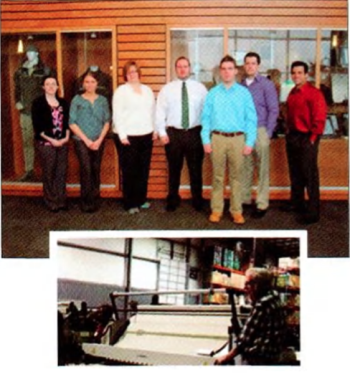
Team Members (L to R): Leah Holoway, Chelsea Wilhelm, Theresa Hampel (Sponsor), Michael Lask, Andrew Hall, Brian Noble, and Patrick Kelleher (GTA)
Recommendations for Quality Improvement of the “Foliage Green Thermopro Jacket”
 Peckham Industries is a non-profit community vocational rehabilitation organization headquartered in Lansing, Michigan. Founded in 1976, its mission statement is to provide job training and competitive employment opportunities for persons with disabilities, and help maximize human potential. Peckham, Inc. specializes in apparel and general manufacturing as well as business and environmental services;
Peckham Industries is a non-profit community vocational rehabilitation organization headquartered in Lansing, Michigan. Founded in 1976, its mission statement is to provide job training and competitive employment opportunities for persons with disabilities, and help maximize human potential. Peckham, Inc. specializes in apparel and general manufacturing as well as business and environmental services;
much of its apparel is manufactured for the United States Army.
Our team is working to ensure consistent quality of the Foliage Green Thermopro Jacket produced for the military. The U.S. Army specifies a tolerance of ± Vi” on the dimensions of the finished jacket. Currently, Peckham has determined the starting dimensions for each piece of the garment and uses a standard ± VS’ fault tolerance on all freshly-cut pieces.
Our team plans to determine the cost-effectiveness of the current fault tolerances, examine the cutting gauges, and calculate the optimal fault tolerances for each zone (e.g., front, back, side) of the jacket. We plan to see the effect on cutting and sewing time with increasing the fault tolerance from Vi” to V2”, as well as the amount of scrap generated due to failure of meeting required dimensions. The optimal fault tolerance will be the most cost-effective for Peckham, while minimizing the time spent and waste generated throughout the cutting and sewing processes.

